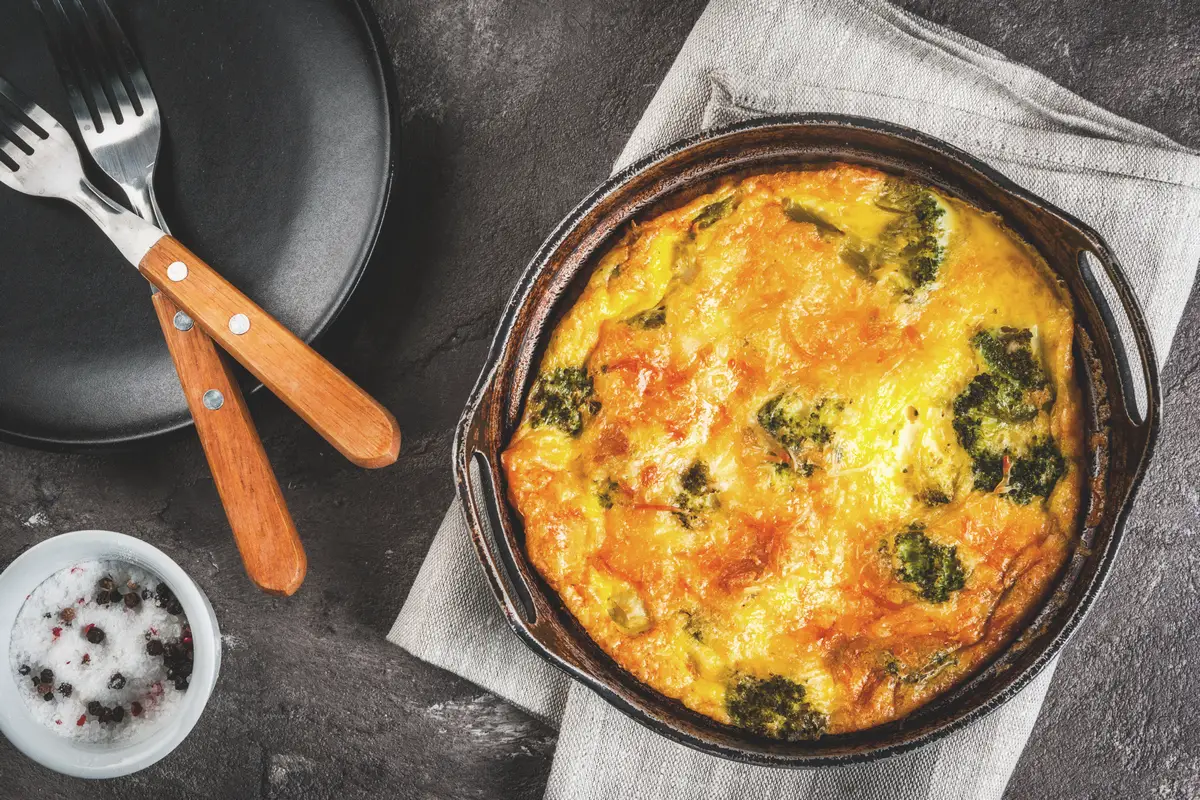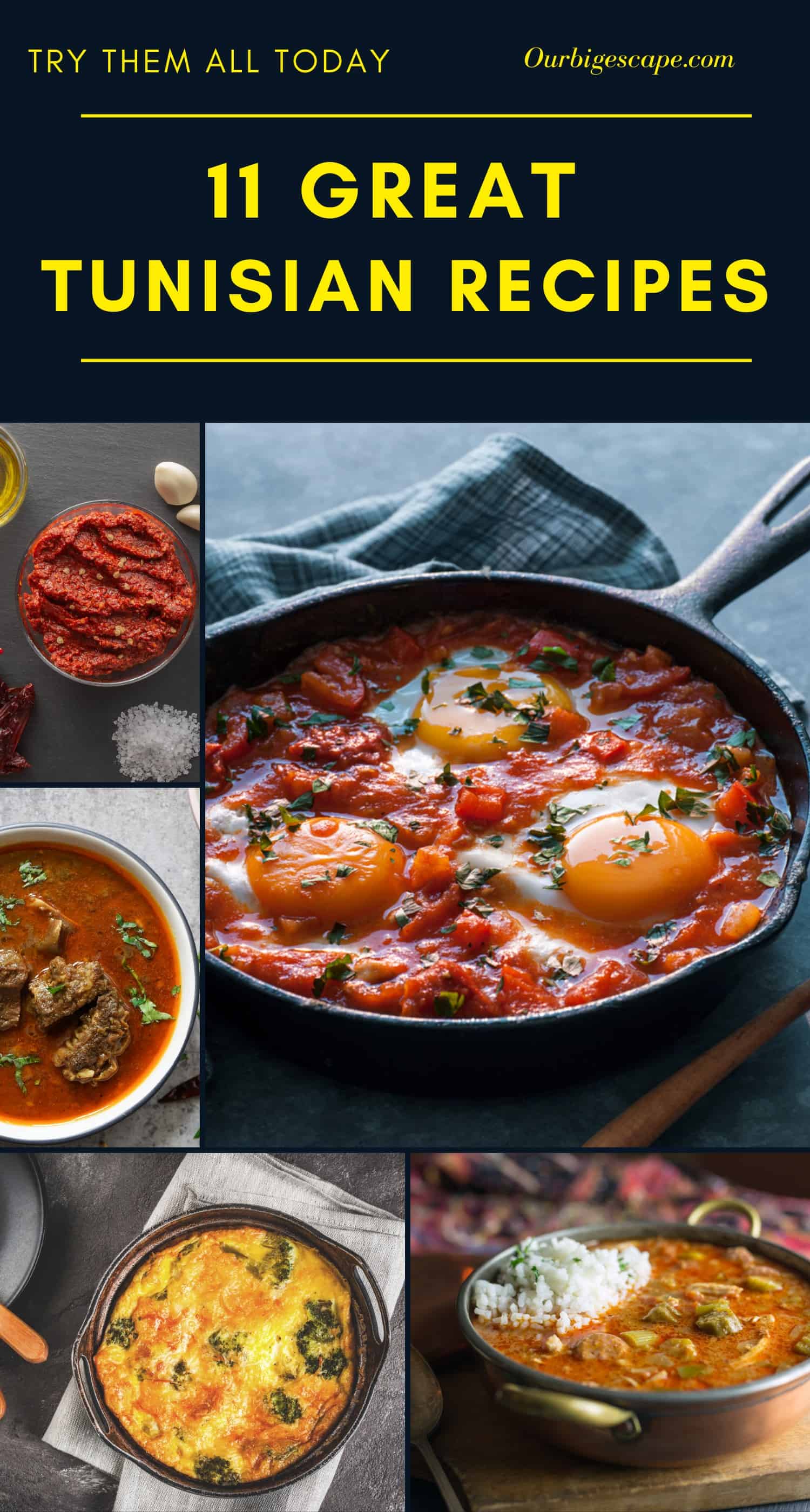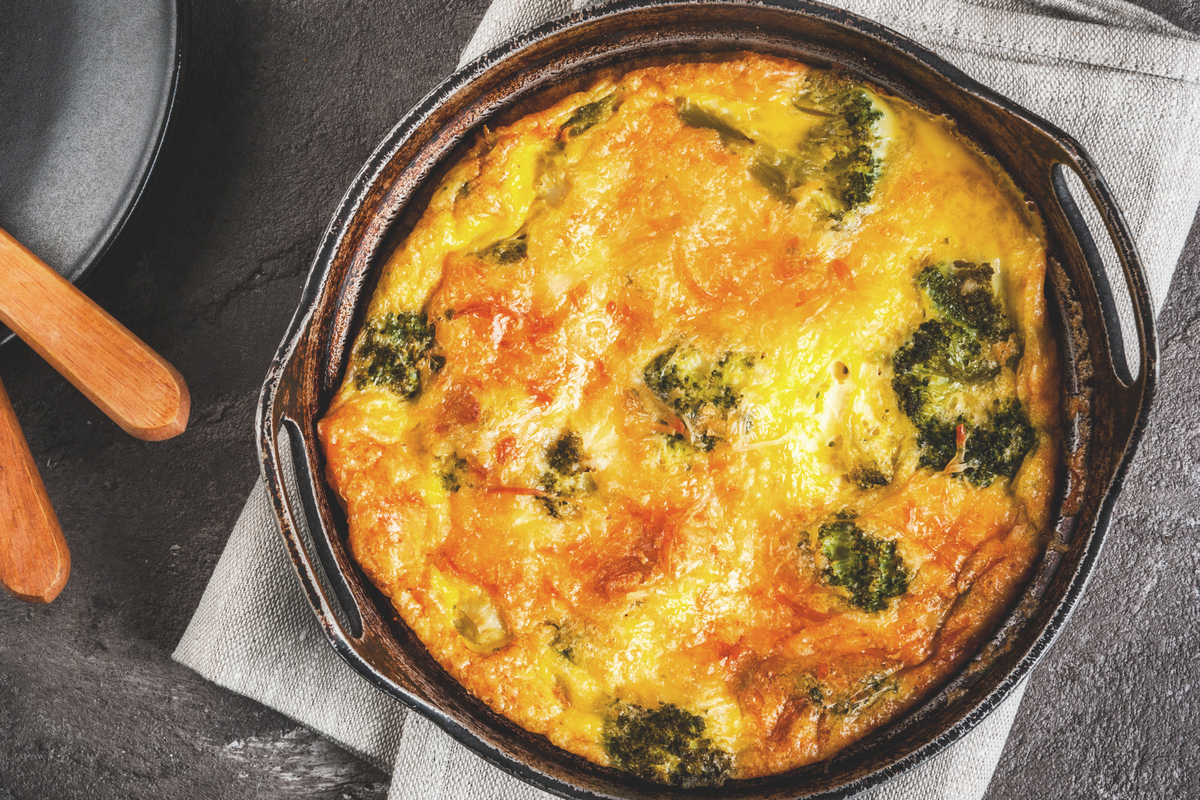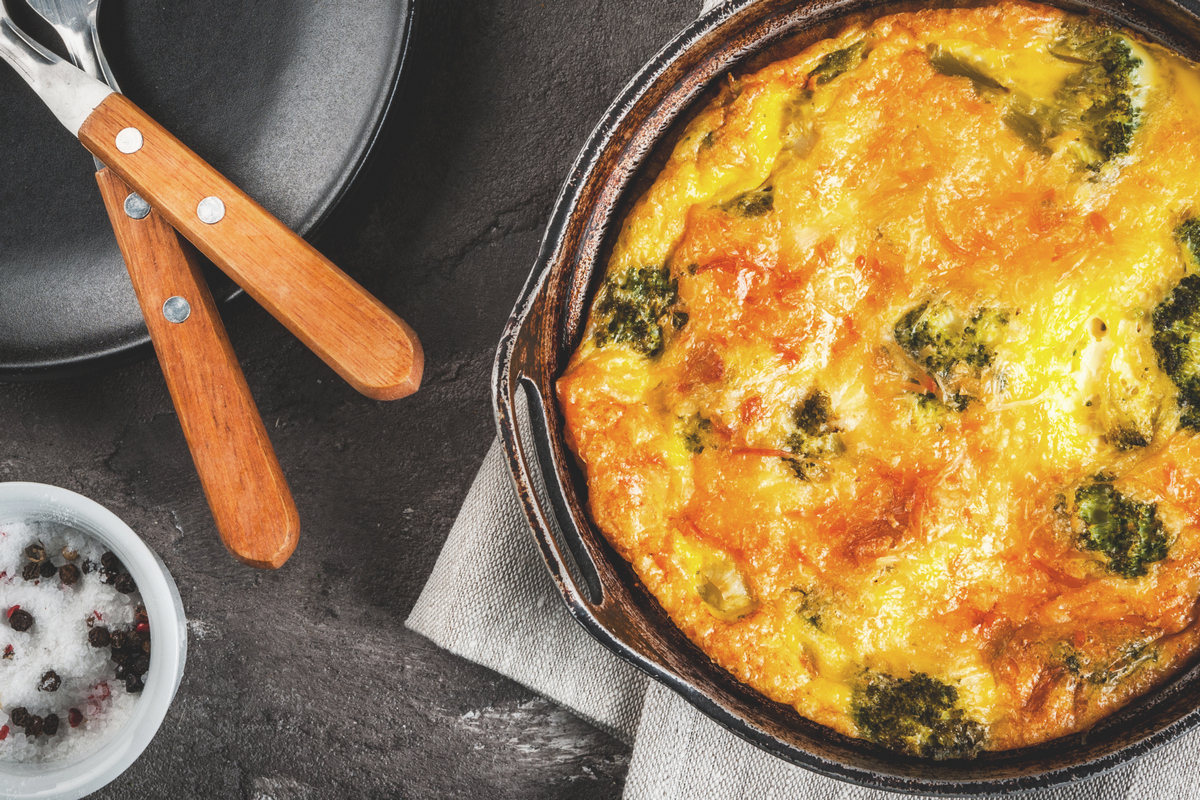
The Tunisian Sibnekh Recipe is a traditional dish with deep roots in Tunisia’s food culture. It’s composed of a harmonious blend of various ingredients, each contributing to its distinct flavor profile. This dish consists of elements carefully chosen to provide a satisfying culinary experience.
Want more ideas to round-out your Recipe Box from Africa?
A lot of great options are in these posts!
11 Tunisian Recipes For Your Kitchens
The main components of the Tunisian Sibnekh Recipe include fresh vegetables, aromatic spices, and a protein source. These ingredients come together to create a flavorful and nutritious dish. The vegetables offer vitamins, minerals, and dietary fiber, promoting overall health. The spices not only enhance the taste but also potentially provide antioxidant and anti-inflammatory properties.
Incorporating this dish into your diet may have several health benefits. The combination of vegetables and protein can offer a balanced intake of nutrients, supporting your body’s needs. The specific spices used in the recipe might contribute to digestive health and potentially aid in metabolism.
The Tunisian Sibnekh Recipe showcases the culinary versatility of Tunisia, using ingredients that have been enjoyed for generations. Its balanced composition adds to its appeal, making it a popular choice among those seeking both flavor and nutrition.
You May Want to Join The World Recipes With Our Big Escape
Share your own recipes in our Facebook Group. Find recipes from all over the world. Learn more about International Cuisine and how you can surprise your family with new and exciting foods from all over the world.
For More Photos Visit Our Instagram at World Recipes Daily
If you’re someone who appreciates diverse cuisines and is interested in trying new flavors, the Tunisian Sibnekh Recipe could be a worthwhile addition to your culinary repertoire. Its cultural significance and potential health benefits make it a dish that can be enjoyed beyond just its taste.
Incorporating the Tunisian Sibnekh Recipe into your meals offers a glimpse into the Tunisian way of cooking and the thoughtful combination of ingredients they value. It’s a dish that not only satisfies your taste buds but also provides a window into a rich culinary tradition.

How To Make Our Tunisian Tajin Sibnekh Recipe
Ingredients (8 Servings)
1/3 cup vegetable oil
2 potatoes, peeled and cubed
8 ounces diced chicken breast meat
1 large onion, diced
1 tablespoon harissa
1 1/2 teaspoons ras el hanout
1/2 cup water
1 1/2 tablespoons tomato sauce
1 tablespoon butter
1 bunch fresh spinach, washed and chopped
8 eggs
1 cup frozen peas
1/3 cup Parmesan cheese
1 pinch salt and pepper to taste
Instructions
1. Heat the vegetable oil in a large skillet over medium heat.
a. Add the cubed potatoes to the skillet and cook until they are golden brown and crispy.
b. Remove the potatoes from the skillet and set them aside.
2. In the same skillet, cook the diced chicken breast meat until it’s cooked through.
a. Stir occasionally to ensure even cooking.
b. Once cooked, remove the chicken from the skillet and set it aside.
3. In the skillet, sauté the diced onion until it becomes translucent and slightly caramelized.
a. Stir to prevent sticking or burning.
b. Add the harissa and ras el hanout spices, and continue to cook for another minute.
4. Pour in the water and tomato sauce, stirring to combine all the flavors.
a. Allow the mixture to simmer gently for a few minutes.
b. Add the butter to enhance the richness of the sauce.
5. Gradually add the washed and chopped fresh spinach to the skillet.
a. Stir the spinach until it wilts and incorporates into the sauce.
b. This will contribute color, flavor, and nutrients to the dish.
6. Crack the eggs directly into the skillet, making small wells in the mixture.
a. Be careful not to break the yolks.
b. Arrange the cracked eggs evenly throughout the skillet.
7. Distribute the frozen peas over the mixture.
a. The peas will provide sweetness and texture to the dish.
b. Spread them evenly for balanced flavors.
8. Sprinkle the Parmesan cheese over the top of the mixture.
a. The cheese will add a savory and creamy element to the dish.
b. Ensure even coverage for consistent taste.
9. Cover the skillet with a lid and allow the eggs to cook.
a. Cook until the egg whites are set but the yolks are still slightly runny.
b. The lid will help trap heat and cook the eggs evenly.
10. Season with a pinch of salt and pepper to taste.
a. Adjust the seasoning according to your preferences.
b. Be mindful not to over-salt, as some ingredients already have natural flavors.
11. Gently slide the cooked potatoes and chicken back into the skillet.
a. These elements will be reheated with the dish.
b. Distribute them evenly throughout the mixture.
12. Once everything is heated through, carefully transfer the mixture to serving plates.
a. Use a spatula to ensure you get all the components from the skillet.
b. Make sure each serving has a balanced combination of ingredients.
13. Serve the Tunisian Sibnekh hot, allowing the flavors to shine.
a. Garnish with fresh herbs if desired.
b. The dish is now ready to be enjoyed by your guests.
Estimated Prep Time: 20 minutes
Cooking Time: 25 minutes

Pots, Pan and Cooking Equipment Needed forthe Tunisian Tajin Sibnekh Recipe
Large skillet
Lid for the skillet
Utensils for stirring and serving
Spatula for transferring the dish
Best Way to Store Leftovers From Tunisian Tajin Sibnekh Recipe
a. Use airtight containers to store leftovers.
b. Refrigerate the leftovers promptly to maintain freshness.
c. Label the containers with the date for easy tracking.
d. Consume the leftovers within 3-4 days for optimal taste.
e. Reheat thoroughly before eating to ensure food safety.
f. Avoid freezing as some ingredients may not freeze well.
Tips and Tricks For Easier Creation
Pre-chop vegetables and measure spices before cooking.
Adjust the level of harissa and ras el hanout according to your spice preference.
Use fresh, high-quality ingredients for the best flavor.
Consider adding a sprinkle of chopped fresh herbs as a finishing touch.
Experiment with different protein sources like lamb or beef for variation.
Serve the dish with crusty bread to soak up the flavorful sauce.
Double the recipe for larger gatherings or leftovers.
Side Dishes and Desserts Forthe Tunisian Tajin Sibnekh Recipe
a. Fluffy couscous with a drizzle of olive oil.
b. Tangy cucumber and tomato salad.
c. Warm pita bread with hummus and olives.
d. Roasted root vegetables for added earthy flavors.
e. Light green salad with lemon vinaigrette.
f. Creamy yogurt-based dip with herbs and spices.
How To Serve the Cuban Tunisian Tajin Sibnekh Recipe
a. Divide the cooked mixture evenly onto serving plates.
b. Garnish with fresh herbs for a pop of color.
c. Provide extra harissa on the side for those who enjoy more spice.
d. Serve with a slice of lemon for added zest.
e. Offer warm pita bread to scoop up the delicious mixture.
f. Enjoy the Tunisian Sibnekh while it’s still hot and flavorful.
Dietary Substitution For the Tunisian Tajin Sibnekh Recipe
1. Vegan Options for the Tunisian Sibnekh Recipe:
a. Replace diced chicken with tofu cubes.
b. Use nutritional yeast instead of Parmesan cheese.
c. Omit eggs and use scrambled tofu.
d. Replace butter with vegan margarine.
e. Choose plant-based harissa for flavor.
2. Gluten-Free Options for the Tunisian Sibnekh Recipe:
a. Use gluten-free harissa and ras el hanout.
b. Opt for tamari sauce instead of regular soy sauce.
c. Select gluten-free bread crumbs for coating.
d. Replace couscous with gluten-free pasta.
e. Use gluten-free flour for thickening.
3. Vegetarian Options for the Tunisian Sibnekh Recipe:
a. Replace diced chicken with marinated tempeh.
b. Use vegetable broth instead of water.
c. Swap Parmesan cheese with a vegetarian alternative.
d. Use a plant-based egg replacer for binding.
e. Choose vegetable-based harissa for flavor.
4. Mediterranean Diet Options for the Tunisian Sibnekh Recipe:
a. Use olive oil instead of vegetable oil.
b. Opt for whole wheat couscous for added fiber.
c. Add extra fresh herbs for Mediterranean flair.
d. Choose feta cheese instead of Parmesan.
e. Use lean ground turkey instead of chicken.
5. Keto Diet Options for the Tunisian Sibnekh Recipe:
a. Replace potatoes with cauliflower florets.
b. Use ghee instead of butter for richness.
c. Opt for keto-friendly tomato sauce without added sugar.
d. Choose almond flour for breading.
e. Use zucchini noodles instead of couscous.
6. Heart-Healthy Diet Options for the Tunisian Sibnekh Recipe:
a. Use lean turkey breast instead of chicken.
b. Choose low-sodium broth instead of water.
c. Opt for whole wheat breadcrumbs for coating.
d. Use olive oil for sautéing instead of butter.
e. Select low-sodium harissa for flavor.
7. Paleo Options for the Tunisian Sibnekh Recipe:
a. Use sweet potatoes instead of regular potatoes.
b. Opt for paleo-approved spices for seasoning.
c. Choose almond flour for breading.
d. Use ghee for sautéing instead of butter.
e. Select paleo-friendly harissa for flavor.
8. Low Carb Options for the Tunisian Sibnekh Recipe:
a. Replace potatoes with cauliflower or turnips.
b. Opt for a low-carb tomato sauce.
c. Choose almond flour for breading.
d. Use ghee for sautéing instead of butter.
e. Select a low-carb harissa for flavor.
9. Whole 30 Options for the Tunisian Sibnekh Recipe:
a. Replace diced chicken with compliant protein.
b. Use clarified butter (ghee) instead of butter.
c. Opt for sugar-free tomato sauce.
d. Choose Whole30-approved spices for flavor.
e. Select a compliant harissa paste.
10. Weight Watchers Options for the Tunisian Sibnekh Recipe:
a. Use lean turkey breast instead of chicken.
b. Opt for reduced-fat Parmesan cheese.
c. Choose a low-fat tomato sauce.
d. Use cooking spray instead of oil for sautéing.
e. Replace butter with a light butter alternative.
11. Low Fat Options for the Tunisian Sibnekh Recipe:
a. Use lean turkey breast instead of chicken.
b. Choose a low-fat tomato sauce.
c. Use cooking spray instead of oil for sautéing.
d. Replace butter with a low-fat margarine.
e. Opt for reduced-fat Parmesan cheese.
12. Vegetable Variations for the Tunisian Sibnekh Recipe:
a. Use sweet potatoes instead of regular potatoes.
b. Opt for tofu or tempeh instead of chicken.
c. Replace eggs with chickpea flour for binding.
d. Choose a vegetable-based harissa for flavor.
e. Use a mix of sautéed mushrooms and spinach for a different texture.
It’s always recommended to check labels, choose quality ingredients, and consult with a healthcare professional or registered dietitian for personalized advice.

FAQ About the Tunisian Tajin Sibnekh Recipe
What is the Tunisian Sibnekh Recipe?
The Tunisian Sibnekh Recipe is a traditional dish from Tunisia, featuring a combination of ingredients like potatoes, diced chicken, harissa, and more.
How do you make the Tunisian Sibnekh Recipe?
The Tunisian Sibnekh Recipe involves sautéing ingredients like diced chicken, potatoes, onions, and spices. It also includes eggs, fresh spinach, and peas, all cooked together for a flavorful dish.
What are the potential health benefits of the Tunisian Sibnekh Recipe?
The Tunisian Sibnekh Recipe can provide a balanced mix of nutrients from its various ingredients, including protein, vegetables, and spices. These elements contribute to its potential health benefits.
Can the Tunisian Sibnekh Recipe be customized for different dietary needs?
Yes, the Tunisian Sibnekh Recipe can be adapted for various diets, such as vegan, gluten-free, and low-carb, by using suitable substitutions for ingredients like meat, dairy, and grains.
What are some popular side dishes to serve with the Tunisian Sibnekh Recipe?
Common side dishes that pair well with the Tunisian Sibnekh Recipe include fluffy couscous, tangy cucumber and tomato salad, warm pita bread with hummus, and roasted root vegetables.
Final Thoughts
The Tunisian Sibnekh Recipe combines diced chicken, potatoes, harissa, and an array of spices, resulting in a flavorful and diverse dish. This traditional Tunisian delicacy highlights a mix of textures and tastes, brought together through a careful cooking process. Its nutrient-rich ingredients, including fresh spinach and eggs, offer potential health benefits.
Moreover, this recipe’s adaptability allows for customization based on dietary preferences, with options for vegan, gluten-free, and other diets. The Tunisian Sibnekh Recipe stands as a versatile dish, reflecting the culinary diversity of Tunisia and its ability to cater to a range of tastes and nutritional needs.
Tunisian Sibnekh Recipe
Ingredients
Equipment
Method
- a. Add the cubed potatoes to the skillet and cook until they are golden brown and crispy.
- b. Remove the potatoes from the skillet and set them aside.
- a. Stir occasionally to ensure even cooking.
- b. Once cooked, remove the chicken from the skillet and set it aside.
- a. Stir to prevent sticking or burning.
- b. Add the harissa and ras el hanout spices, and continue to cook for another minute.
- a. Allow the mixture to simmer gently for a few minutes.
- b. Add the butter to enhance the richness of the sauce.
- a. Stir the spinach until it wilts and incorporates into the sauce.
- b. This will contribute color, flavor, and nutrients to the dish.
- a. Be careful not to break the yolks.
- b. Arrange the cracked eggs evenly throughout the skillet.
- a. The peas will provide sweetness and texture to the dish.
- b. Spread them evenly for balanced flavors.
- a. The cheese will add a savory and creamy element to the dish.
- b. Ensure even coverage for consistent taste.
- a. Cook until the egg whites are set but the yolks are still slightly runny.
- b. The lid will help trap heat and cook the eggs evenly.
- a. Adjust the seasoning according to your preferences.
- b. Be mindful not to over-salt, as some ingredients already have natural flavors.
- a. These elements will be reheated with the dish.
- b. Distribute them evenly throughout the mixture.
- a. Use a spatula to ensure you get all the components from the skillet.
- b. Make sure each serving has a balanced combination of ingredients.
- a. Garnish with fresh herbs if desired.
- b. The dish is now ready to be enjoyed by your guests.
Notes


